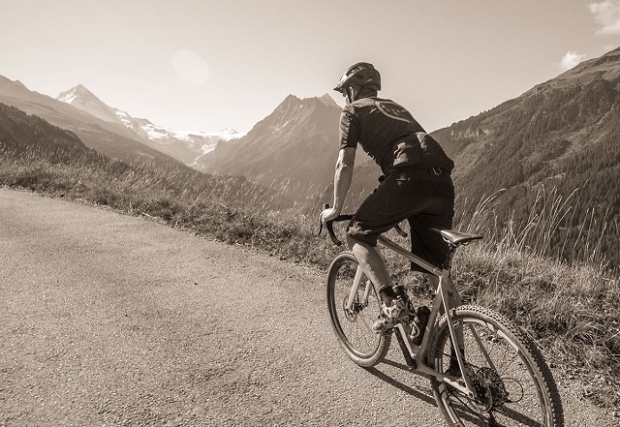Was Ironman Arizona 70.3 Safe to Race?
When it comes to the use of masks I am an active activist. I politely confront non-mask-wearers in public places, as well as lazy or timid or non-compliant store managers. I have called and written the national headquarters of stores and have spoken and written to the health officials and politicians and leaders in my state and county.
What about when compliance collides with our own avocation? There are plenty who feel that the very act of participation in a triathlon is abetting the spread of this pathogen. Look on our Reader Forum. “Americans going to triathlons, Trump rallies, family gatherings, indoor restaurants, and amusement parks, and fraternity parties have led to a major spike in COVID.”
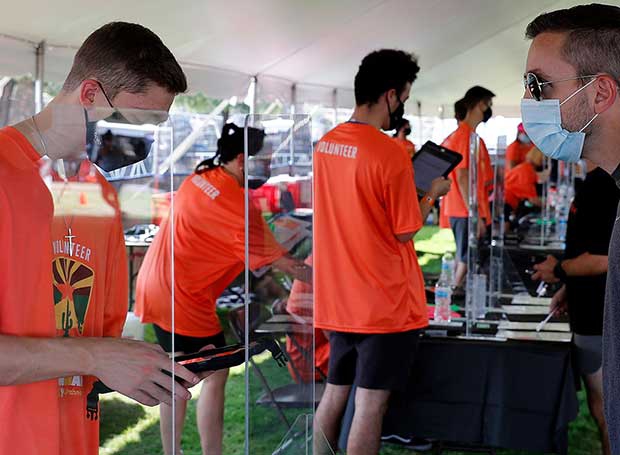
Are triathlons fairly placed in the same category as maskless political rallies and indoor restaurants? My behavior and activism is limited to what is discoverable by science, by evidence, and known best practices. I just don’t know yet whether triathlons or gravel races aid abet the pandemic. I think we will know. Two months after the Sturgis motorcycle rally, the Dakotas are the hottest of COVID hotspots. What will happen to those 800 who competed in Tempe’s 70.3 this past weekend? I hope we can crowdsource anecdotes to generate at least a sense of whether this was a safe way to host an in-person race, or whether this is a bad idea.
But Sturgis this race was not. Below is a first-person account from a competitor, Bryan Dunn, who writes from his perspective on the subject of safety. This isn’t to say that participation in a race so-produced is wise; rather to show by words and images what an Ironman-produced race in the age of COVID looks like. Accompanying his comments are photos that I selected out of an array of images taken by Ironman’s photographers at the event. From Bryan:
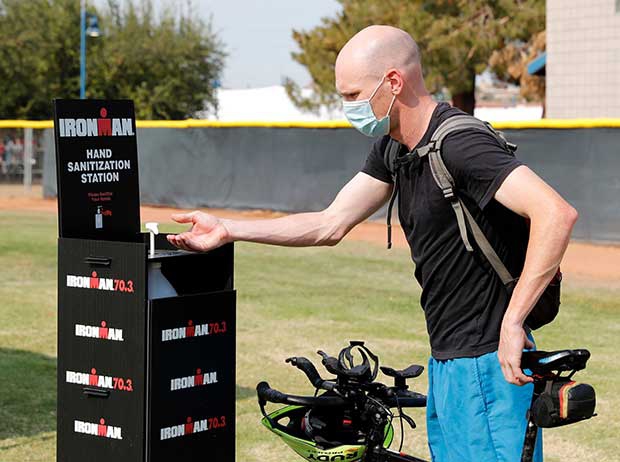
“Dan reached out and asked me to go into more detail on the specifics of how WTC conducted this race and their specific mitigation and distance protocols. I'm also friends with the RD and had the opportunity to get her thoughts as well. The event never could have happened without her and her staff working to design a plan that would be acceptable to the Tempe Special Events governing body.
“In order receive the approval, they had to demonstrate all their precautions to allow more then 50 people to safely gather, and Tempe had to have acceptably low numbers of daily new cases per 100,000 residents and percent positivity of all tested cases. That's the same metric they use to determine if schools can offer in person learning here in AZ.
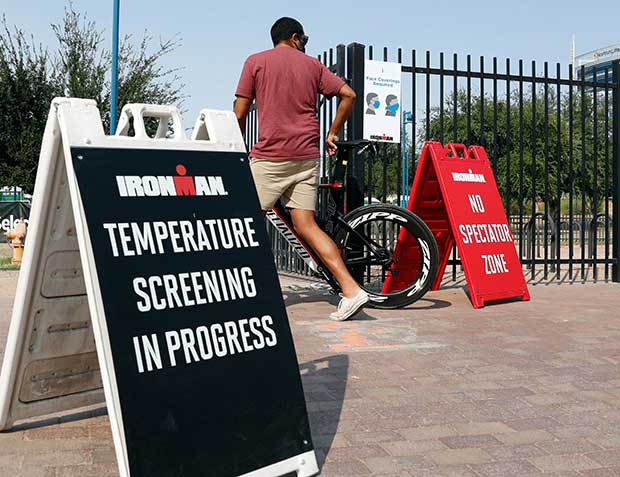
“The race director did this with a greatly reduced staff. There have been a lot of layoffs and cutbacks at WTC since the new owners came in, and [as a result of] the pandemic. She said it was like the old North American Sports days with a small crew all chipping in to make a race happen, so tip of the hat to their Team.
“Prior to race weekend, all participants could review the Athlete Guide which was modified to describe the process for registration and bike drop off on Saturday and race day. There would be no athlete briefing or any organized activities in and around the traditional Athlete Village. They did post a briefing online as well as a Q&A with the RD answering some of the most frequent questions.
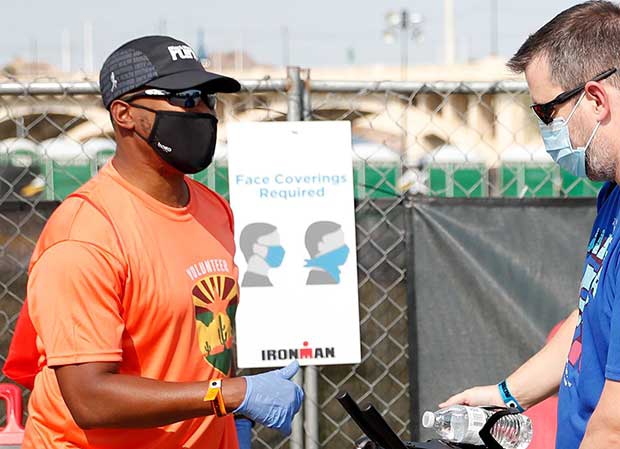
“All participants received an e-mail from Active.com where you selected a one hour window on Saturday to bring down your bike and do registration. My wife and I selected 9-10am, the second hour time slot available (they began at 8am). As we approached Tempe Beach Park and the Athlete Village, we could immediately see there was control over the flow of pedestrian traffic with staff at the various entrances, with hand sanitizer and enforcing the mask requirement to enter.
“We were directed to the separate Athlete Check in area. Again, they had some tables set up under a tent where they did the initial check in of scanning your registration code and checking your driver’s license. The volunteers were behind a 2-foot high wall of plexiglass since they couldn't practically be 6-feet away while doing this. We were given a pen to use that also had a rubber ball on one end to be able to hands-free tap on an iPad device screen. I thought that was a nice touch.
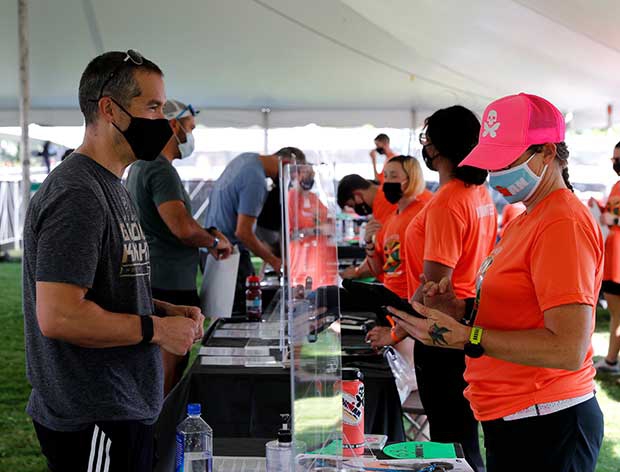
“Once verified, we looped through a fenced in walkway, so the only way into this area was the main entrance. We had our bikes and we approached a bike valet area. We were given tickets to retrieve the bikes and racked them so we could continue into the main registration tent. The registration tables were the same as the ones out front, plexiglass barriers with a small cut out to pass any items through. Other than the plexiglass, masks, markers on the ground, registration was pretty normal. You got you envelope, cap, numbers, t-shirt, and bag. There was no crowding anywhere but that might have been because of the time of day we were there and perhaps someone else can chime in on how this process worked later in the day with perhaps more people.
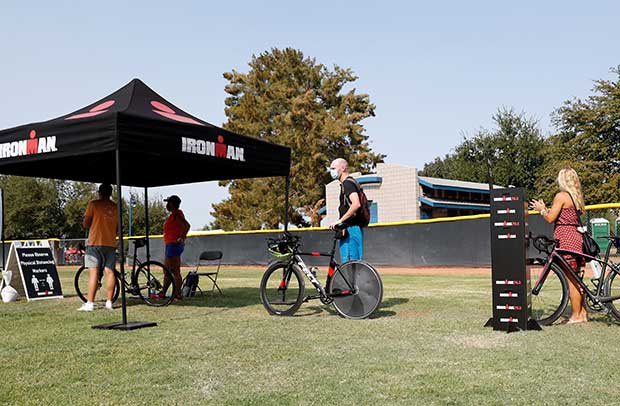
“We went and retrieved our bikes and rolled them to the entrance to Transition. Once into transition, I could see they brought all the racks. It looked more like IMAZ then Tempe 70.3. The numbers on any given side were 6-feet apart with a number on the opposite side in between. So the effect was standing on your side of the rack you were separated from your neighbors on either side and a person was on the opposite side also enjoying the same separation. I have never had so much real estate in a transition before and it was delightful.
“My wife wanted to pop into the Ironman Store, so we walked over. They only allowed a fixed number of people in the tent and we queued up outside on the markers painted in the grass. It took about 5 minutes to get in. Once inside it was set up like a lot of grocery stores today, with arrows for one way traffic flow. Again all the checkout tables had the plexiglass barriers.
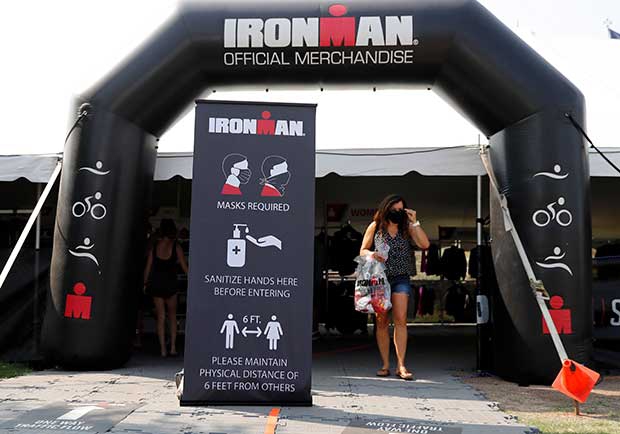
“We arrived race morning and set up our gear as usual. Again, this all felt very normal. Port-a-potties had lines of people all standing 6 feet apart. We were provided a mask to make the trip to the swim start as it would be thrown away and people have masks they may like and not want to use. The swim start for this race is about 400 meters west of transition. As we walked over I noticed they had set up barrier fencing the entire length from transition to swim start. This ensure it was athlete only in the area and prevented spectators from milling with them. They had these barriers on the east side as well for the swim exit.
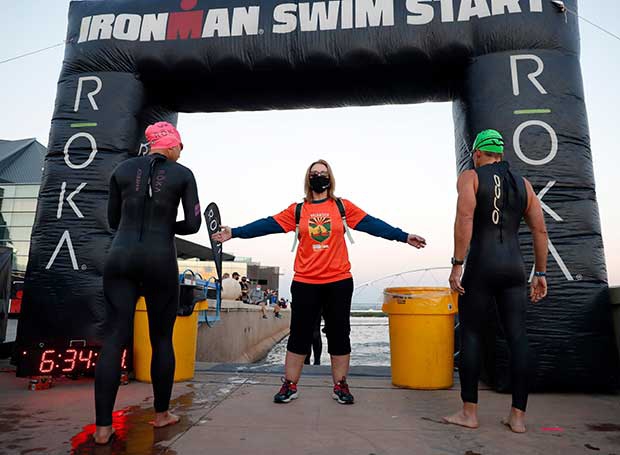
“As we approached the swim start are, there were volunteers with signage for swim pace corrals. for all swimmers under 35 minutes, they simply lined us up in two rows 6 feet apart, everyone in masks. Paul Huddle was stalking up and down the rows reminding people to keep their masks in place. Once the cannon sounded, two swimmers were staged to start, one would go and 5 seconds later the other. I arrived a tad late to the area and was a good 50 feet from the ramp but it only took about 5min to start. I was so preoccupied I did forget to take off my mask when told to go and had to literally rip it from my face.
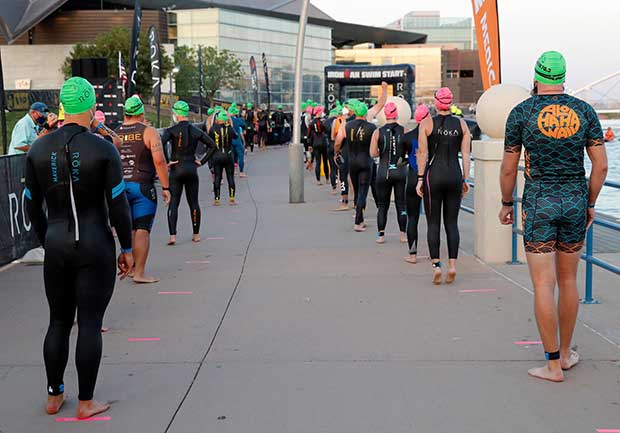
“The swim, T1, and the bike were all perfectly normal. I didn't use either of the bike aid stations but volunteers in masks were behind the tables offering to hand you a bottle or nutrition but it was incumbent on the rider to stop—no flying hand-offs. On the run the tables were set up with the traditional rhythm of water, Gatorade, Red Bull, Coke, Water, Ice. Again it was up to the athlete to pick up their own nutrition, the volunteers stood back and kept the tables stocked and directed you to the table with whatever you requested. Once finished, you removed your own timing chip, picked up your medal yourself, and provided another mask to exit.
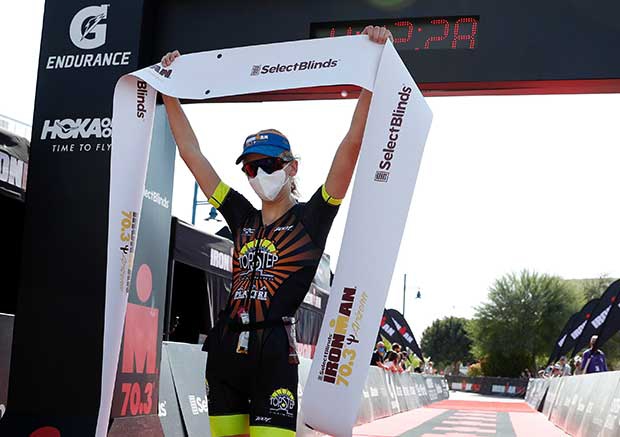
“At the finish area it was VERY hot and I think all participants struggled wearing the mask, but volunteers were always around to remind you to pull it up. Normally they don't allow people into transition until a specific time but yesterday they were clearly keen to get us all out of their as quickly as possible so you could immediately access the area to collect your gear and bike. Since all awards would be mailed and the WC slot allocation done via e-mail, to was nice to be able to pack up and go home especially considering it was 90F.
“So that's about it. I look forward to hearing from other forum members who were there and share their thoughts. I personally think they did a fantastic job and as a proof of concept, they succeeded."




